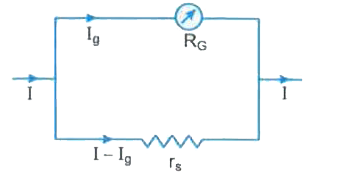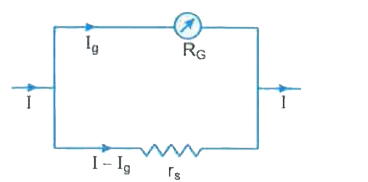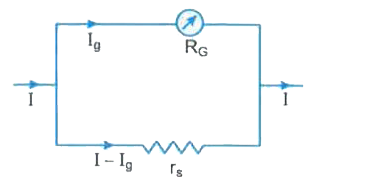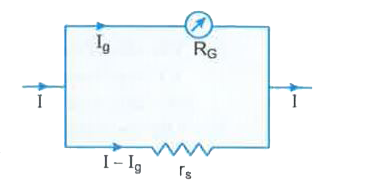The function of IgE is:
mediate in allergic response
activation of B-cells
protection from inhaled and ingested pathogen
stimulation of complement system , passive immunity to foetus
The correct Answer is:A
Step by step video, text & image solution for The function of IgE is: by Biology experts to help you in doubts & scoring excellent marks in Class 12 exams.
Updated on:21/07/2023Topper's Solved these Questions
- HUMAN HEALTH AND DISEASEBOOK - DINESH PUBLICATIONCHAPTER - HUMAN HEALTH AND DISEASEEXERCISE - CHECK YOUR GRASP
13 Videos
- HUMAN HEALTH AND DISEASEBOOK - DINESH PUBLICATIONCHAPTER - HUMAN HEALTH AND DISEASEEXERCISE - CHECK YOUR GRASP
13 Videos
- HUMAN EVOLUTIONBOOK - DINESH PUBLICATIONCHAPTER - HUMAN EVOLUTIONEXERCISE - Brain Teasers-VII
182 Videos
- HUMAN REPRODUCTIONBOOK - DINESH PUBLICATIONCHAPTER - HUMAN REPRODUCTIONEXERCISE - MCQ
767 Videos
Similar Questions
A moving coil galvanometer is a sensitive device which can be used as a detector to check if a curretn is flowing in a circuit. A galvanometer works on the principle that a current carrying coil placed in a radial magnetic field experiences a deflecting torque whose magnitudes is directly proportional to the electric current passing through it. The deflection ϕ is indicated by a pointer and is give as ϕ=NABk⋅I.
A galvonometer can be used to measure electric current flowing througha circuit direcly in ampere and its submultiples. For this purpose we join a small resistance 'rs' in parallel to the galvonometer. Such a shunted galvonometer is called an ammeter. If a galvanomter, having a resistance RG, givens full scale deflection for a current Ig and we want to measure a current ranging from 0−IgA, then the value of shunt resistance will be
rs=RG⋅IgI−Ig

How is a radial magnetic field obtained?
View SolutionA moving coil galvanometer is a sensitive device which can be used as a detector to check if a curretn is flowing in a circuit. A galvanometer works on the principle that a current carrying coil placed in a radial magnetic field experiences a deflecting torque whose magnitudes is directly proportional to the electric current passing through it. The deflection ϕ is indicated by a pointer and is give as ϕ=NABk⋅I.
A galvonometer can be used to measure electric current flowing througha circuit direcly in ampere and its submultiples. For this purpose we join a small resistance 'rs' in parallel to the galvonometer. Such a shunted galvonometer is called an ammeter. If a galvanomter, having a resistance RG, givens full scale deflection for a current Ig and we want to measure a current ranging from 0−IgA, then the value of shunt resistance will be
rs=RG⋅IgI−Ig

What is the net resistance of shunted galvanomter?
View Solution
Knowledge Check
Which of the function is the function of adrenaline?
AHelps in the gastric juice secretionBIncreases heart rate and blood pressureCIncreases blood calciumDHelps in milk secretion
Onto function (Surjective function) and Into functions
View SolutionA moving coil galvanometer is a sensitive device which can be used as a detector to check if a curretn is flowing in a circuit. A galvanometer works on the principle that a current carrying coil placed in a radial magnetic field experiences a deflecting torque whose magnitudes is directly proportional to the electric current passing through it. The deflection ϕ is indicated by a pointer and is give as ϕ=NABk⋅I.
A galvonometer can be used to measure electric current flowing througha circuit direcly in ampere and its submultiples. For this purpose we join a small resistance 'rs' in parallel to the galvonometer. Such a shunted galvonometer is called an ammeter. If a galvanomter, having a resistance RG, givens full scale deflection for a current Ig and we want to measure a current ranging from 0−IgA, then the value of shunt resistance will be
rs=RG⋅IgI−Ig

There is a moving coil galvonometer in which there are 30 divisions on either side of central zero mark. It gives full scale deflection for a current of 600μA. What is its current sensitivity ?
View SolutionA moving coil galvanometer is a sensitive device which can be used as a detector to check if a curretn is flowing in a circuit. A galvanometer works on the principle that a current carrying coil placed in a radial magnetic field experiences a deflecting torque whose magnitudes is directly proportional to the electric current passing through it. The deflection ϕ is indicated by a pointer and is give as ϕ=NABk⋅I.
A galvonometer can be used to measure electric current flowing througha circuit direcly in ampere and its submultiples. For this purpose we join a small resistance 'rs' in parallel to the galvonometer. Such a shunted galvonometer is called an ammeter. If a galvanomter, having a resistance RG, givens full scale deflection for a current Ig and we want to measure a current ranging from 0−IgA, then the value of shunt resistance will be
rs=RG⋅IgI−Ig

If you want to measure a current ranging 0 - 1.5 A using the above galvonometer. What shunt resistance should be joined with it ? Resistance of galvanometer coil is 300Ω.
View SolutionA moving coil galvanometer is a sensitive device which can be used as a detector to check if a curretn is flowing in a circuit. A galvanometer works on the principle that a current carrying coil placed in a radial magnetic field experiences a deflecting torque whose magnitudes is directly proportional to the electric current passing through it. The deflection ϕ is indicated by a pointer and is give as ϕ=NABk⋅I.
A galvonometer can be used to measure electric current flowing througha circuit direcly in ampere and its submultiples. For this purpose we join a small resistance 'rs' in parallel to the galvonometer. Such a shunted galvonometer is called an ammeter. If a galvanomter, having a resistance RG, givens full scale deflection for a current Ig and we want to measure a current ranging from 0−IgA, then the value of shunt resistance will be
rs=RG⋅IgI−Ig

Why do we use a radial magnetic field in a moving coil galvonometer?
View SolutionThe composition of any function with the identity function is the function itself.
View SolutionInverse function|| Bounded function || Explicit & Implicit function
View SolutionHomogeneous Function || Bounded function || Identity function|| Explicit and implicit function || Even and odd function
View Solution
